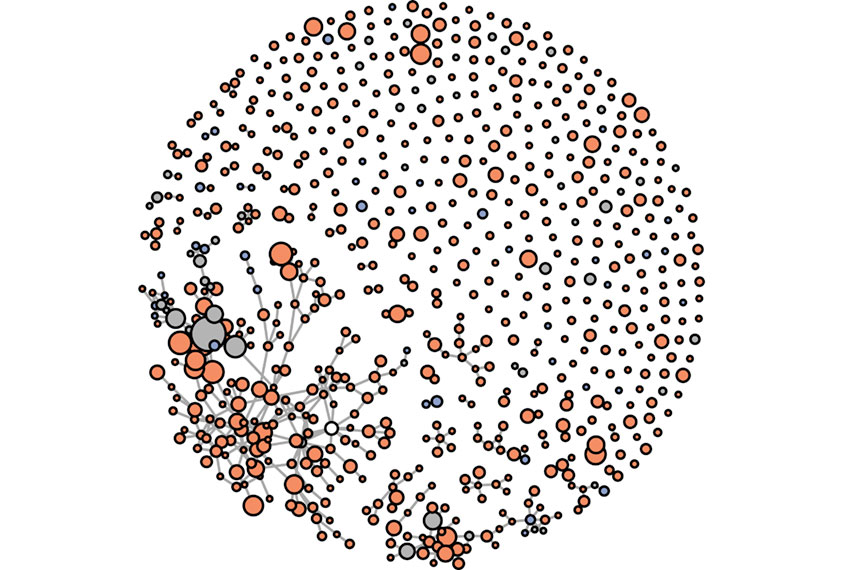A new atlas catalogs more than 125,000 protein-protein interactions across brain and six other kinds of tissue in mice — more than doubling the number previously known. The dataset, described in Cell in July, may prove useful to autism researchers aiming to understand which proteins ‘talk’ to each other and how those interactions differ across tissue from various parts of the mouse.
Scientists have typically measured only one protein-protein interaction at a time, grabbing hold of one of the proteins, pulling it from a cell and seeing which other proteins it is interacting with. But that method is slow and laborious, says study investigator Leonard Foster, professor of biochemistry at the University of British Columbia in Vancouver, such that “doing 5,000 proteins is 5,000 times more work than doing one.”
To create the new atlas, Foster and his colleagues used a method called ‘protein correlation profiling-stable isotope labeling of mammals’ that can measure thousands of molecular interactions at once.
The team’s full dataset is available in the paper’s supplemental information and online, and researchers can also query specific proteins through a web application.
“By putting this resource out there, people who already have data on some of these proteins can look and say, ‘Hey, look! My protein is in there,’” Foster says. “And now, suddenly, things make sense because this protein might be interacting with this other protein that they hadn’t thought of before.”
Protein “gold mine”:
To map protein-protein interactions en masse, the team fed two generations of mice ‘heavy’ forms of amino acids, which assimilate into proteins over time and can serve as labels in each of the seven kinds of tissues tested: brain, heart, liver, lung, kidney, muscle and thymus.
The team extracted labeled and unlabeled protein complexes from the tissues and used an electrified gel to sort them by size and charge. They used mass spectrometry to identify each protein. Comparing the labeled proteins with the control ‘background’ reveals which proteins are interacting, according to Foster.
“We do this on a large scale, looking at thousands of proteins,” he says. “We can simultaneously monitor hundreds or maybe up to a thousand different protein complexes at the same time.”
The researchers cataloged between 20,000 and 35,000 protein-protein interactions in each of the seven tissues, for a total of more than 125,000 unique interactions.
In additional experiments, Foster’s team benchmarked their atlas against nine databases that together include more than 82,000 protein-protein interactions. Just 4,354 of the interactions that Foster’s team found were documented in those databases, suggesting that much of the dataset consists of new information.
Proteins implicated in conditions such as Huntington’s disease were significantly more likely than those not linked to any condition to have varying protein-protein interactions across tissues, the researchers found. In other words, disease-linked proteins change their interaction partners, or whom they ‘talk’ to, from one kind of tissue to the next. These tissue-specific communication networks could explain why some diseases manifest only in specific body parts, the authors say, even though mutations in germline cells, such as eggs and sperm, can disrupt a protein throughout the body.
Foster says he plans to evaluate how a genetic mutation in, say, an autism-linked gene, can change the encoded protein’s interactions with other proteins in a cell.
“If you really drill into the data, there are interactions between proteins that seem to be involved in various neuronal disorders that nobody has reported before,” he says. “We really feel that it’s a bit of a gold mine here. But it’s a gold mine with many, many different tunnels, and it’s not even clear where you should start.”






